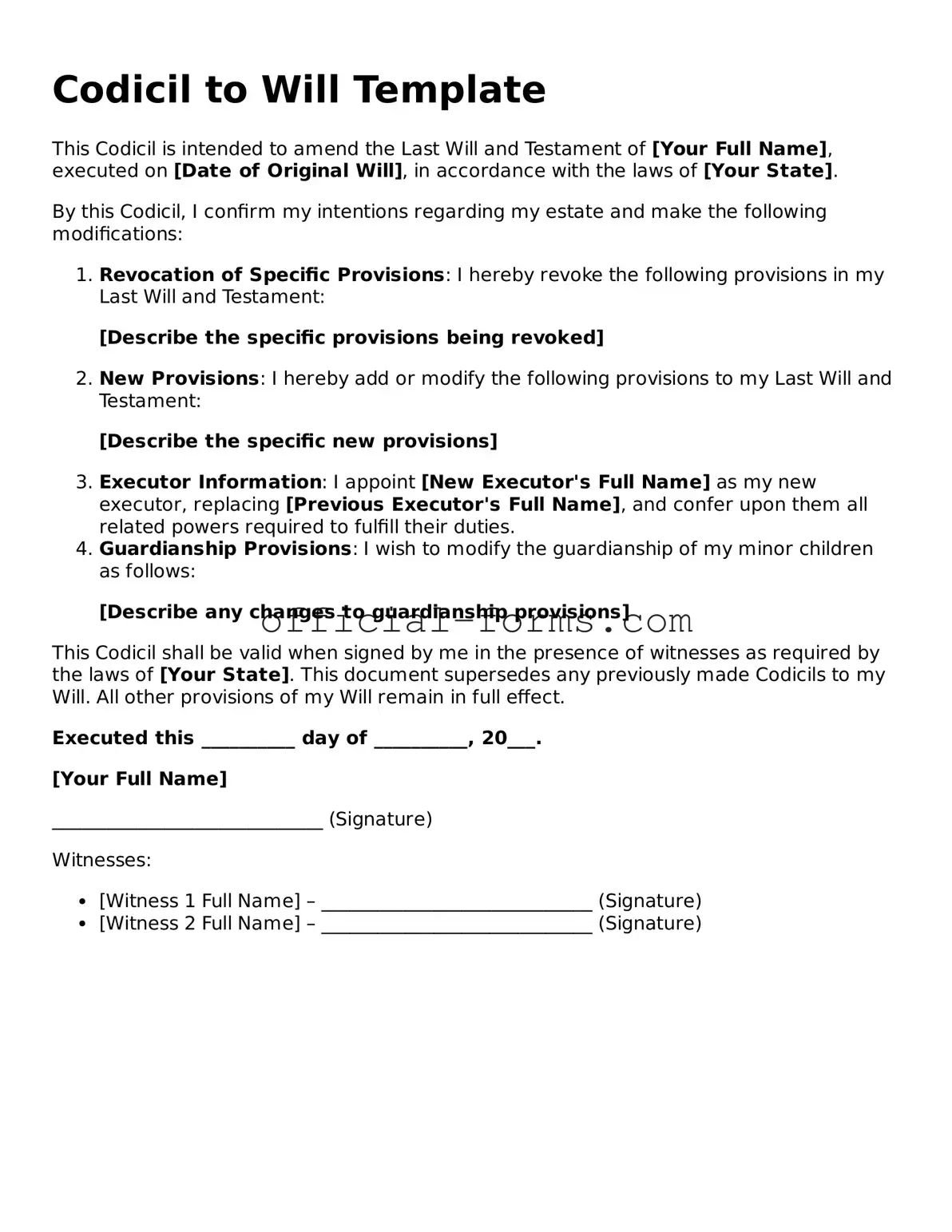Filling out the Codicil to Will form can be straightforward, but many people make mistakes that can lead to complications. One common error is not properly identifying themselves. It's crucial to include your full legal name and address. Failing to do so can create confusion about who the codicil belongs to.
Another frequent mistake is not clearly stating the changes being made. If you want to add or remove a beneficiary, specify this clearly. Vague language can lead to disputes among heirs. Always be direct about your intentions.
Many individuals forget to date the codicil. A date is essential for establishing when the changes were made. Without it, there could be questions about the validity of the document. Always include the date prominently.
Signature errors are also common. It’s important to sign the codicil in the same manner as your original will. If you use a different name or style, it may raise doubts about your intentions. Consistency is key.
Witness requirements can be overlooked. Some states require witnesses to sign the codicil. Not following these rules can render the document invalid. Make sure to check your state’s requirements and comply with them.
People sometimes neglect to inform their executor or family members about the codicil. Communication is vital. If no one knows about the changes, your wishes may not be honored. Always discuss significant changes with those involved.
Another mistake is failing to keep the codicil with the original will. If the codicil is misplaced, it can lead to confusion and potential legal battles. Store both documents together in a safe place.
Some individuals rush through the process and do not review their codicil carefully. Typos or unclear language can lead to misunderstandings. Take the time to read through your document thoroughly before finalizing it.
Additionally, people may forget to revoke any previous codicils. If you have made multiple changes over time, ensure that only the most recent codicil is valid. Clearly state that all previous codicils are revoked to avoid conflicts.
Finally, many fail to seek professional advice when needed. If you are unsure about any aspect of the codicil, consulting with a legal professional can save you from potential issues down the line. It’s better to be safe than sorry.
